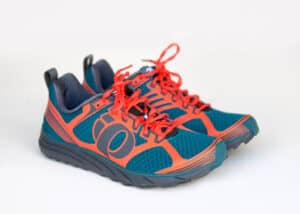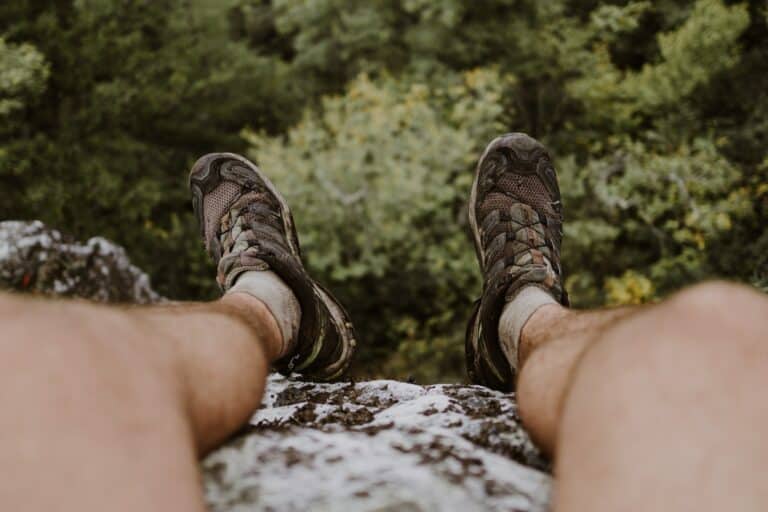Trail running shoes are the unsung heroes of your running gear. They brave rugged terrains, rocky trails, and muddy paths, providing the support and protection your feet need. But like all heroes, even they have their limits. In this comprehensive guide, we’ll explore the signs that indicate when to replace trail running shoes.
Why Trail Running Shoes Matter
Before delving into the specifics, let’s understand the importance of your trail running shoes. They are your trusty companions on the adventurous journey of off-road running. Designed for the unpredictable and challenging terrains, they offer features like enhanced traction, durability, and protection. However, even the best trail running shoes have a lifespan, and knowing when to replace them is crucial for your running performance and injury prevention.
Signs of Wear and Tear

The first step in determining when to replace your trail shoes is to keep an eye out for visible signs of wear and tear. These include:
1. Sole Wear and Tear
Trail running shoes are designed with sturdy outsoles to withstand tough terrains. Over time, the tread on the sole begins to wear down. This can result in reduced traction and grip on uneven surfaces. If you notice a significant loss of sole tread, it’s a strong indicator that your shoes may need replacing.
2. Rips or Damage
Inspect your shoes for any visible damage, like rips in the fabric or structural issues. Such damage can compromise the shoe’s integrity and affect your running experience.
3. Reduced Cushioning and Support
One of the key features of trail running shoes is their cushioning and support. If you feel a decrease in comfort, it might be time for a new pair. Running in shoes with worn-out cushioning can lead to discomfort and overuse injuries like shin splints.
4. Changes in Running Style
Your running style and form may evolve over time. If you notice that your old shoes no longer support your current running style or feel uncomfortable, it could be an indication that you need a new pair designed for your specific needs.
Mileage-Based Replacement

A commonly used guideline for replacing running shoes, including trail running shoes, is based on mileage. However, it’s essential to note that the specific mileage varies depending on several factors, such as your running style, body weight, and shoe quality. Here’s a general rule of thumb:
5. General Rule of Thumb
Replace your trail running shoes every 300-500 miles. This range provides a starting point, but it’s essential to consider other factors that may lead to quicker wear.
Time-Based Replacement
While mileage is a crucial factor, it’s not the only one to consider. The age of your shoes can also impact their performance, even if you haven’t reached the recommended mileage. Shoes can deteriorate with time, and the rubber in the soles can harden and lose its grip. It’s a good practice to check the manufacturing date on your shoes and consider replacing them if they’re several years old.
Biomechanical Changes
Your body and running style can change over time, affecting how your shoes wear. If you’ve experienced injuries or discomfort while running in your old shoes, it may be time to evaluate your running gait and consider a new pair of trail running shoes that better accommodate your biomechanical needs.
The Importance of Traction on Trails
Trail conditions play a significant role in the lifespan of your shoes. Uneven terrain, rocks, and muddy paths can put extra stress on your shoe’s outsole, resulting in quicker wear. Good traction is essential for a safe and enjoyable trail running experience, so be attentive to signs of reduced grip.
Tips for Extending Shoe Life
To make the most of your trail running shoes and prevent premature wear, consider the following tips:
6. Proper Cleaning and Storage
Regularly clean your shoes to remove dirt and mud that can accelerate wear. Let them air dry after each run to prevent the growth of odor-causing bacteria.
7. Rotate Between Two Pairs
If you’re a dedicated trail runner, it’s a good idea to have two pairs of trail running shoes. Alternating between them can extend the lifespan of each pair and allow them to air out between runs.
8. Choose Quality Shoe Manufacturers
Invest in reputable shoe manufacturers known for their durable and high-quality trail running shoes. Quality shoes are more likely to withstand the demands of trail running.
9. Consider Your Running Gait
If you’re dealing with premature wear in certain areas of your shoes, it may be due to your running gait. Consider getting a gait analysis to identify any issues that need addressing.
The Rise of Minimalist Shoes
Minimalist shoes have gained popularity among runners seeking a more natural and lightweight running experience. These shoes are designed with the philosophy of promoting a more efficient and less cushioned stride. While they might not be everyone’s cup of tea, they offer a unique alternative for trail runners.
When considering minimalist shoes for trail running, it’s crucial to understand their specific features and benefits. They typically have a lower heel-to-toe drop, a more flexible sole, and a lighter overall design. These characteristics can provide a different feel when compared to traditional trail running shoes.
New Shoes for a New Experience
If you’re contemplating making the switch to minimalist shoes, remember that it’s like embarking on a new running adventure. Your feet and legs will need time to adjust to the different mechanics of these shoes. You may experience increased muscle engagement and a change in running form.
When transitioning to minimalist shoes, take it slow. Start with shorter runs and gradually increase the distance as your body adapts. This approach not only prevents overuse injuries but also allows you to break in your new shoes properly.
Maintaining Multiple Pairs: The Advantage of Having More Than One Pair

More Than One Pair for Versatility
Trail runners often face diverse terrain and weather conditions. Having more than one pair of trail running shoes can be a game-changer. You can choose shoes tailored to specific challenges, whether it’s rocky trails, muddy paths, or dry terrains.
Additionally, rotating between different pairs of trail running shoes can extend the lifespan of each. When you’re not wearing a particular pair, they can air out, and the cushioning can regain its shape. This means less tread wear and better overall performance for each pair.
Your Old Pair: Don’t Discard, Repurpose
When you decide it’s time to replace your old pair of trail running shoes, don’t rush to throw them away. While they might no longer provide the necessary support for your trail runs, they can still serve other purposes. Many runners repurpose their old shoes for activities like gardening or casual walks.
Another option is to use your old pair as backup shoes for less demanding activities or as a spare pair for emergency situations. This way, you get the most out of your old shoes without wasting them.
Final Thoughts: When to Replace Trail Running Shoes
Knowing when to replace your trail running shoes is vital for maintaining your running performance and preventing injuries. Keep a close eye on the signs of wear and tear, and be mindful of the mileage, time, and changes in your running style. By taking proper care of your shoes and making informed decisions, you can enjoy many miles of adventurous trail running.
